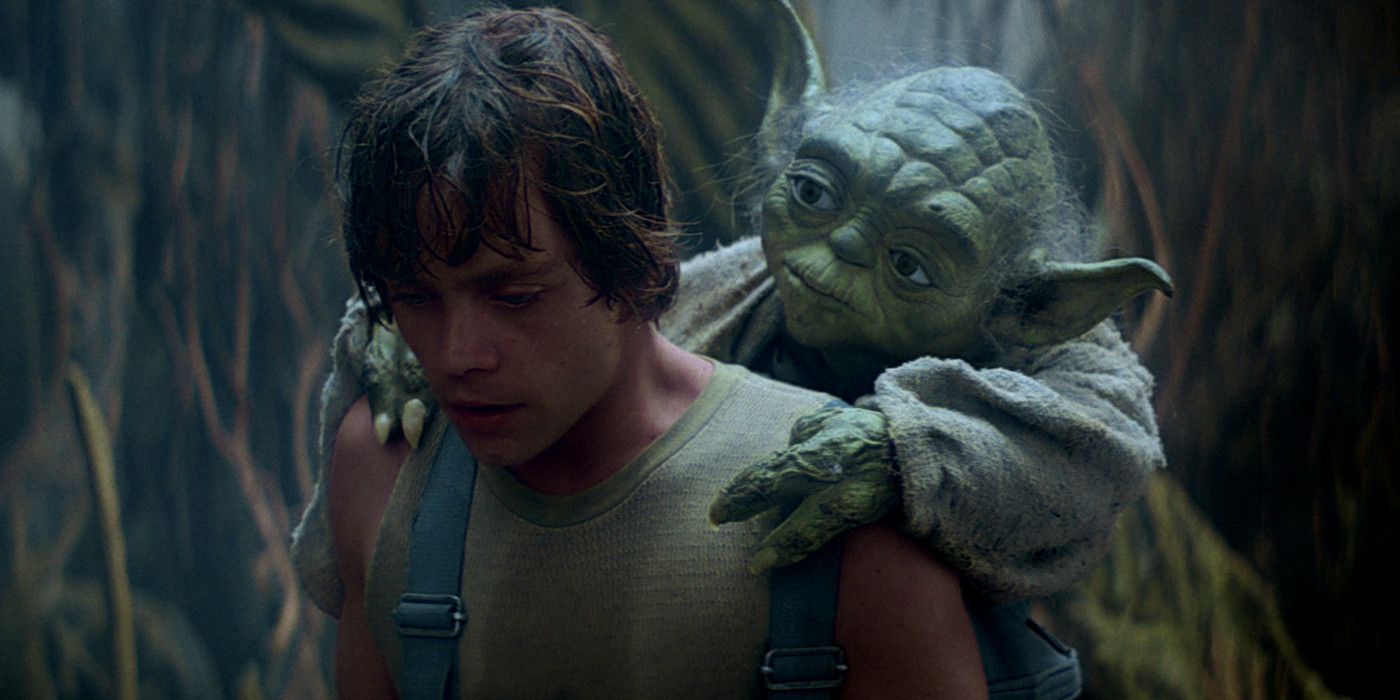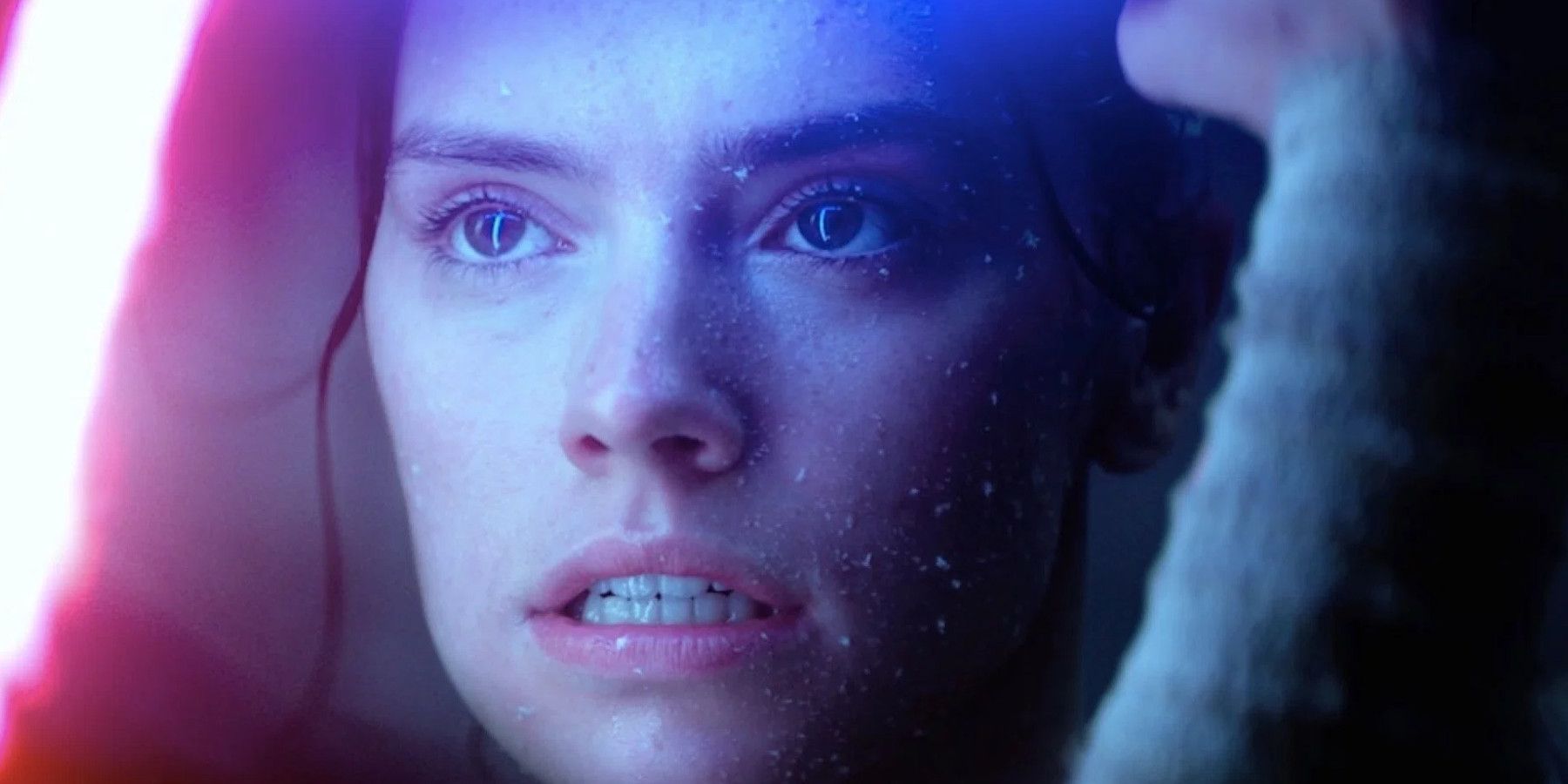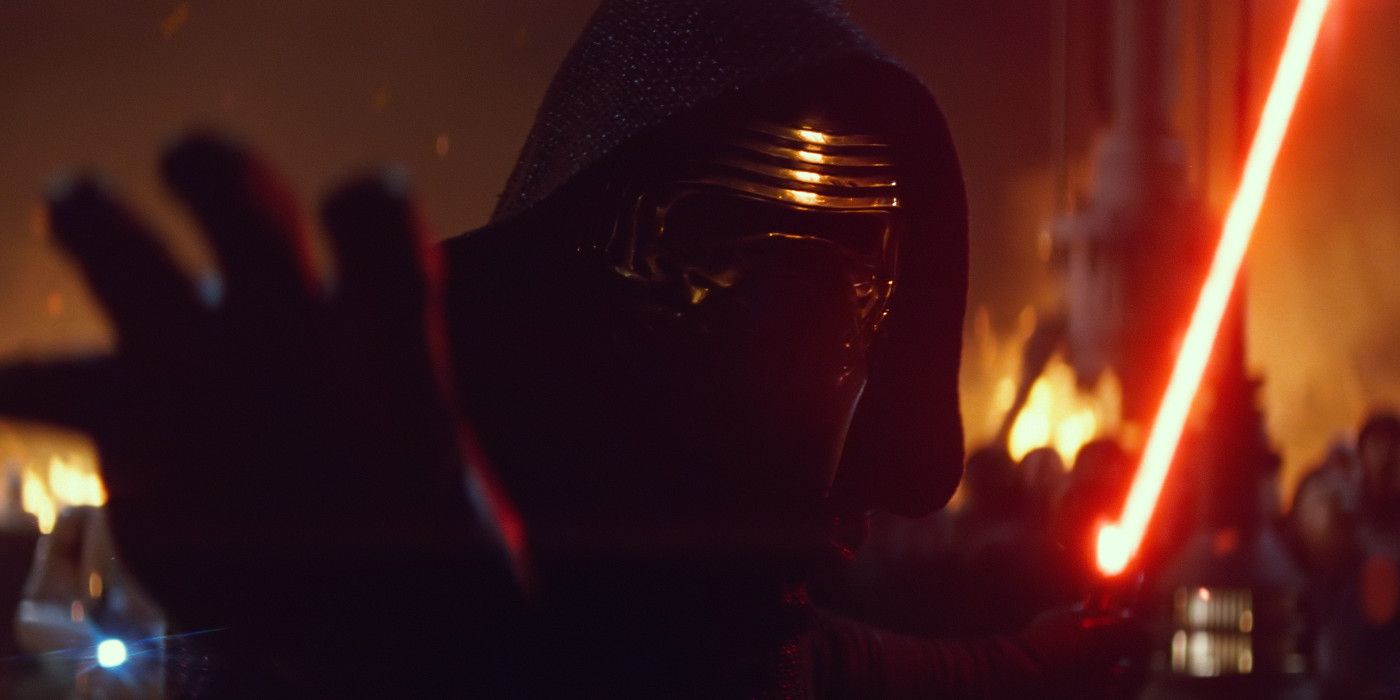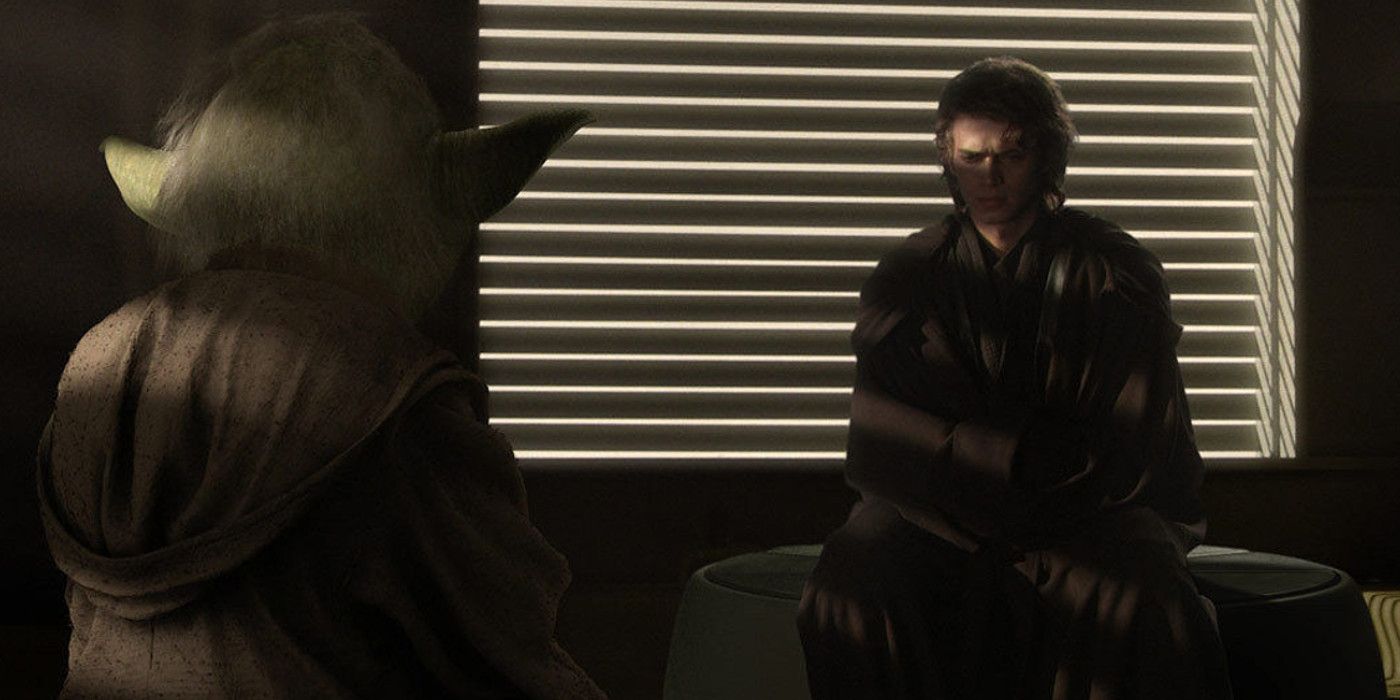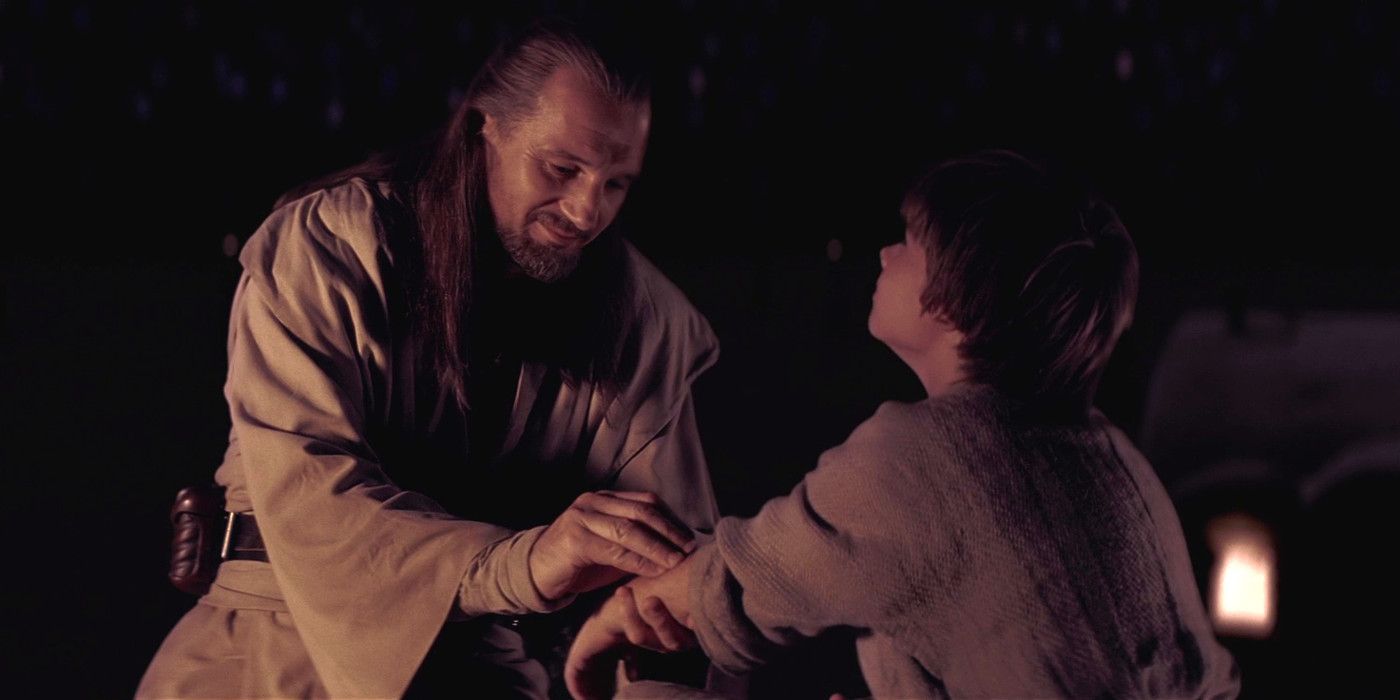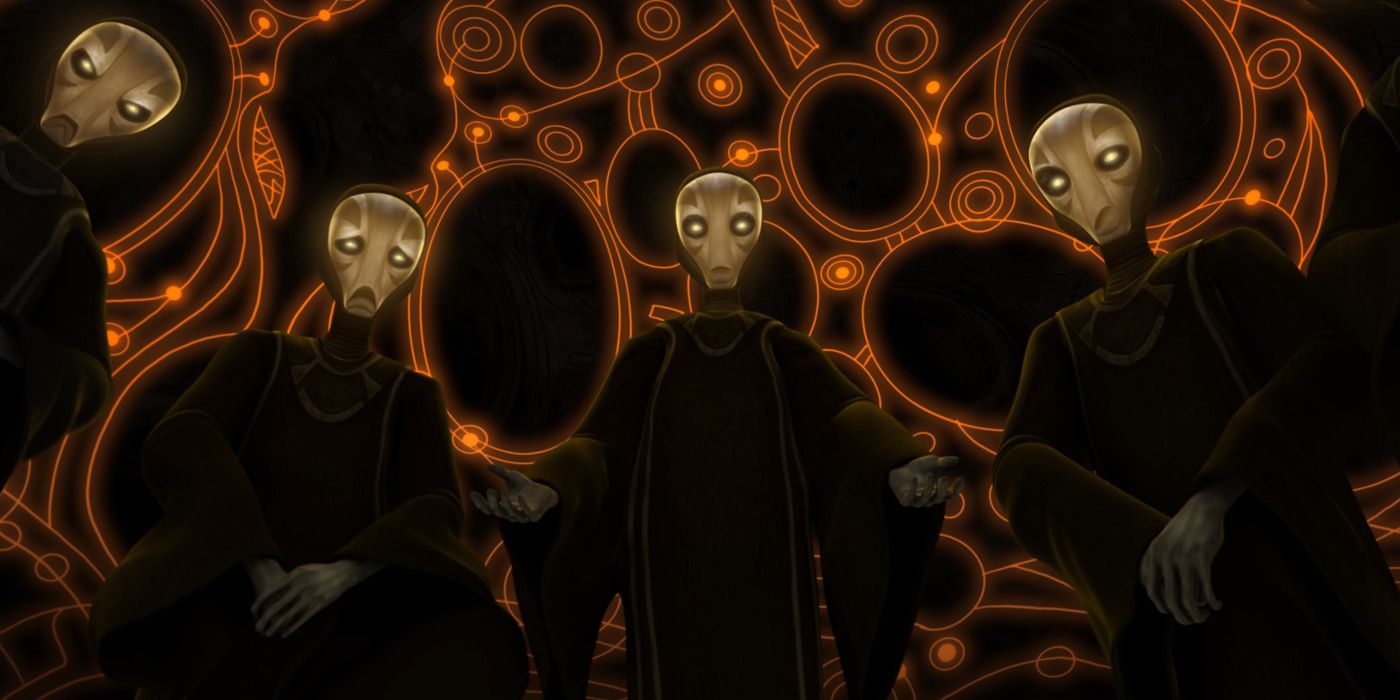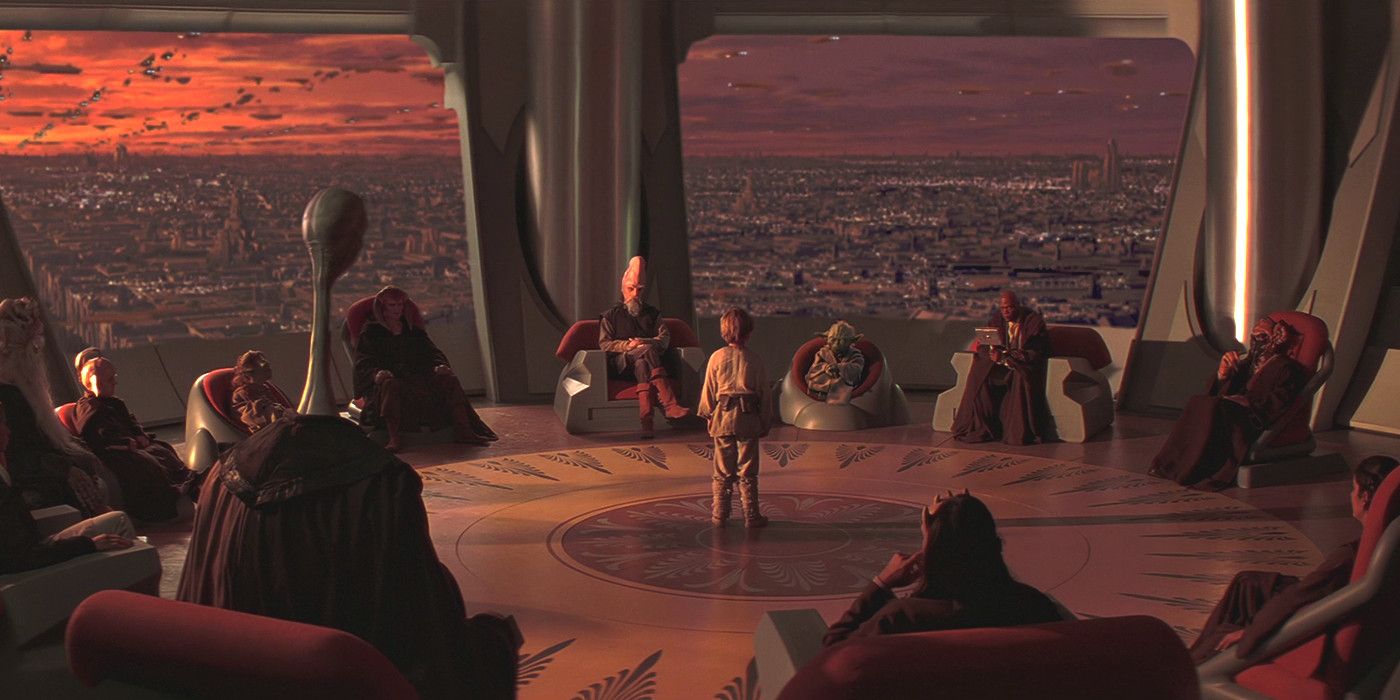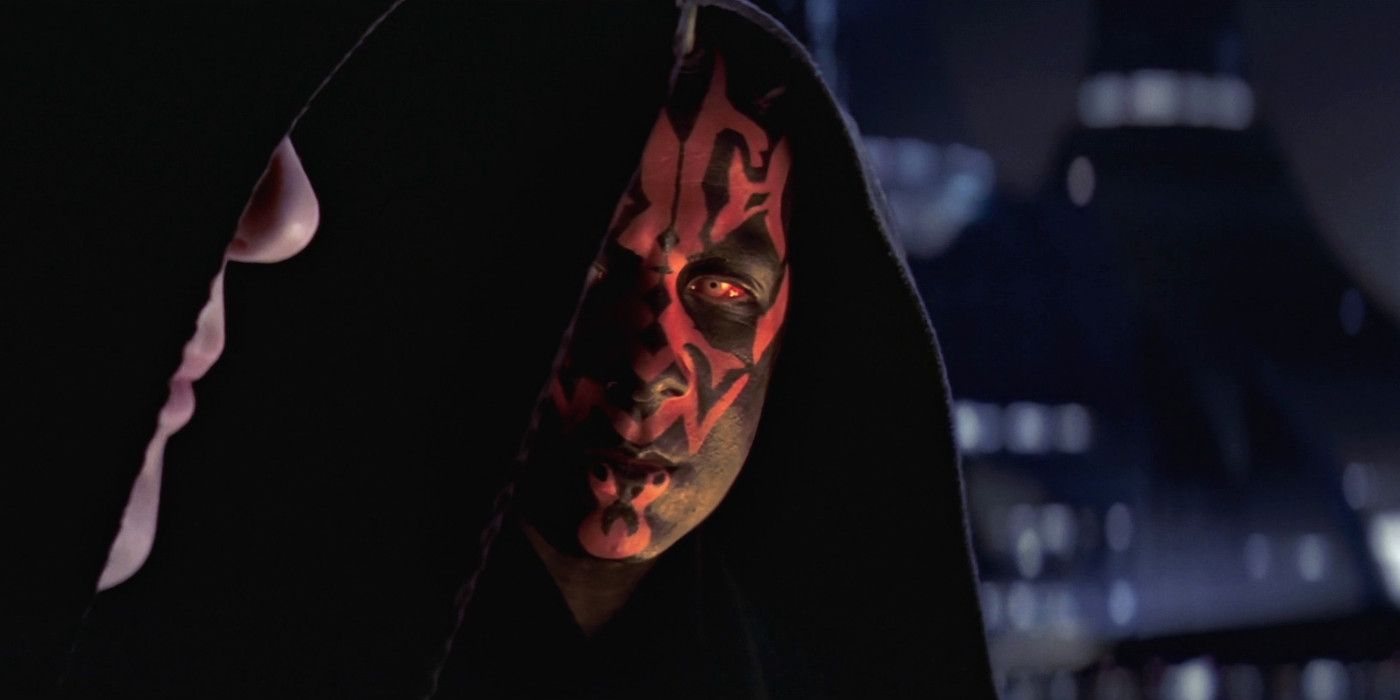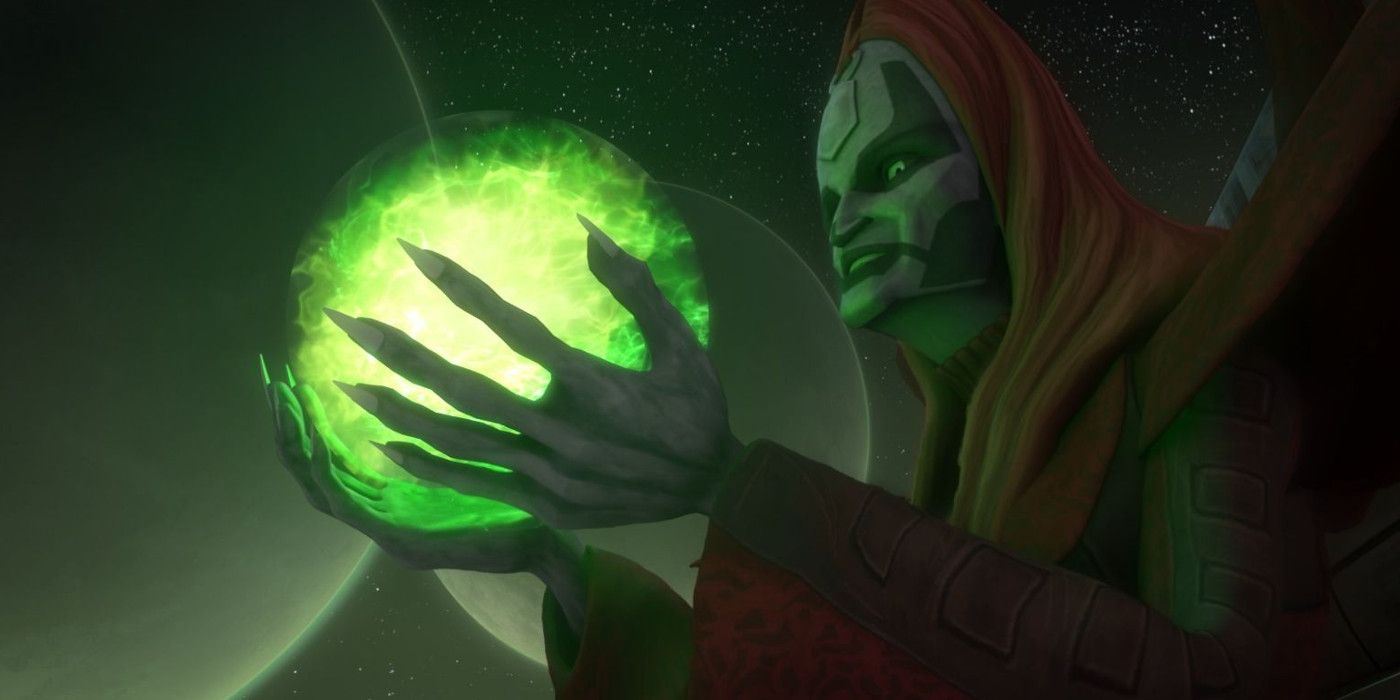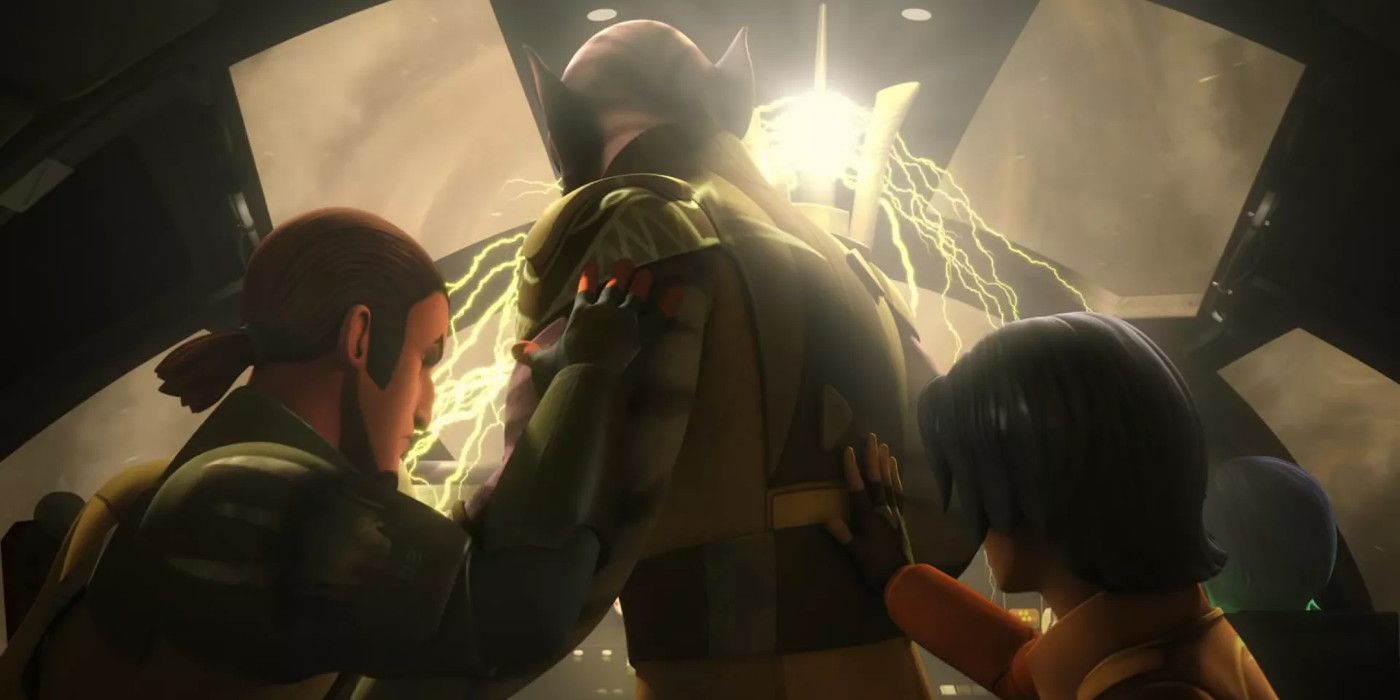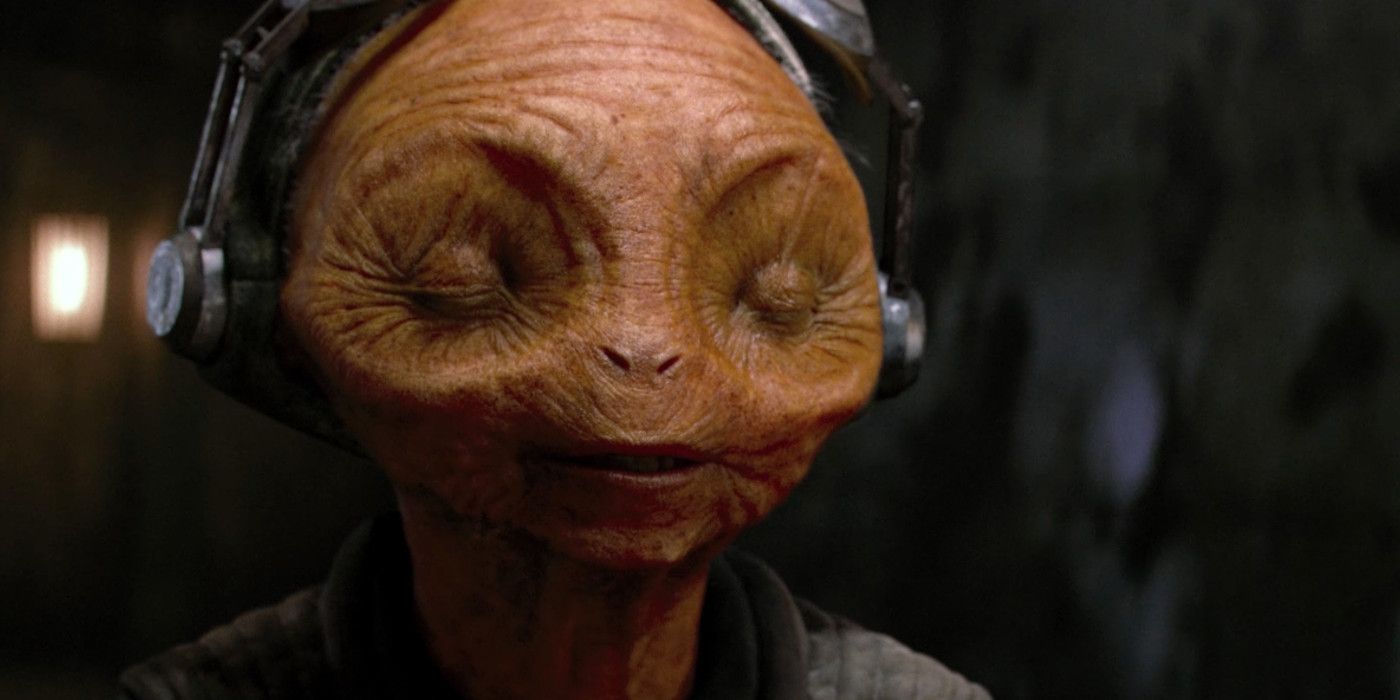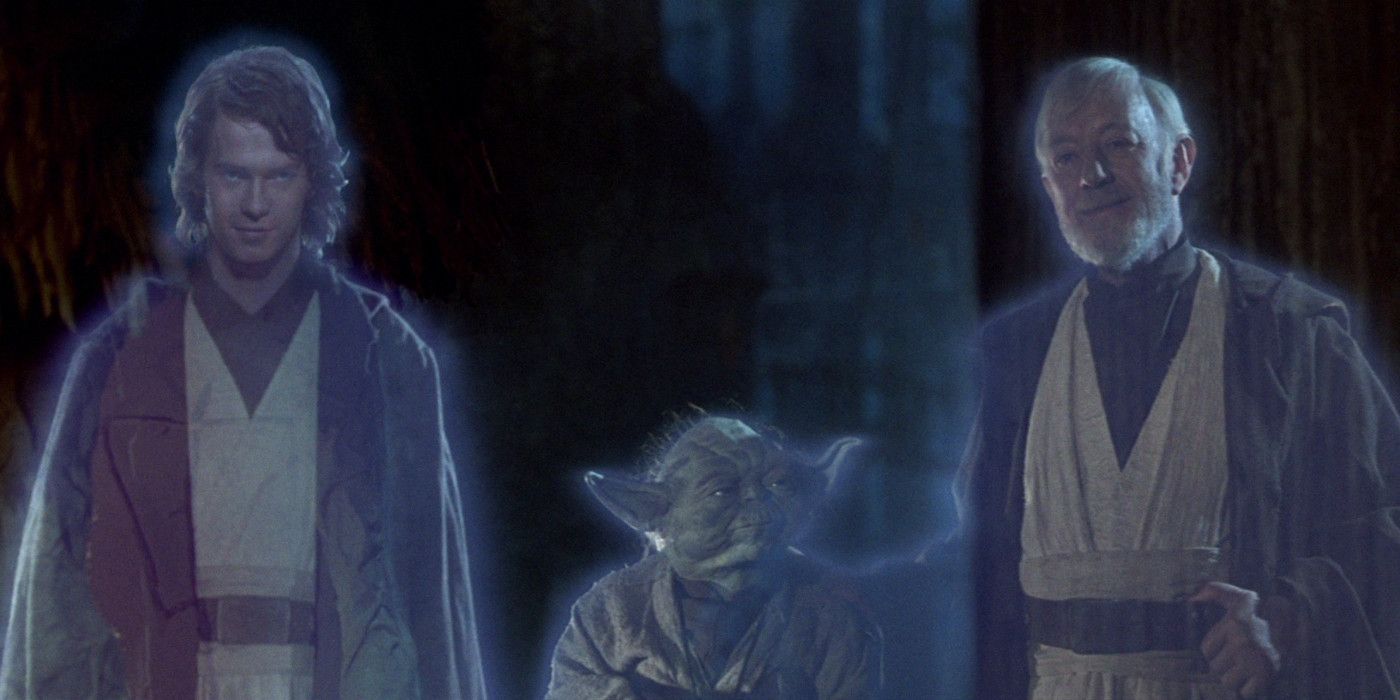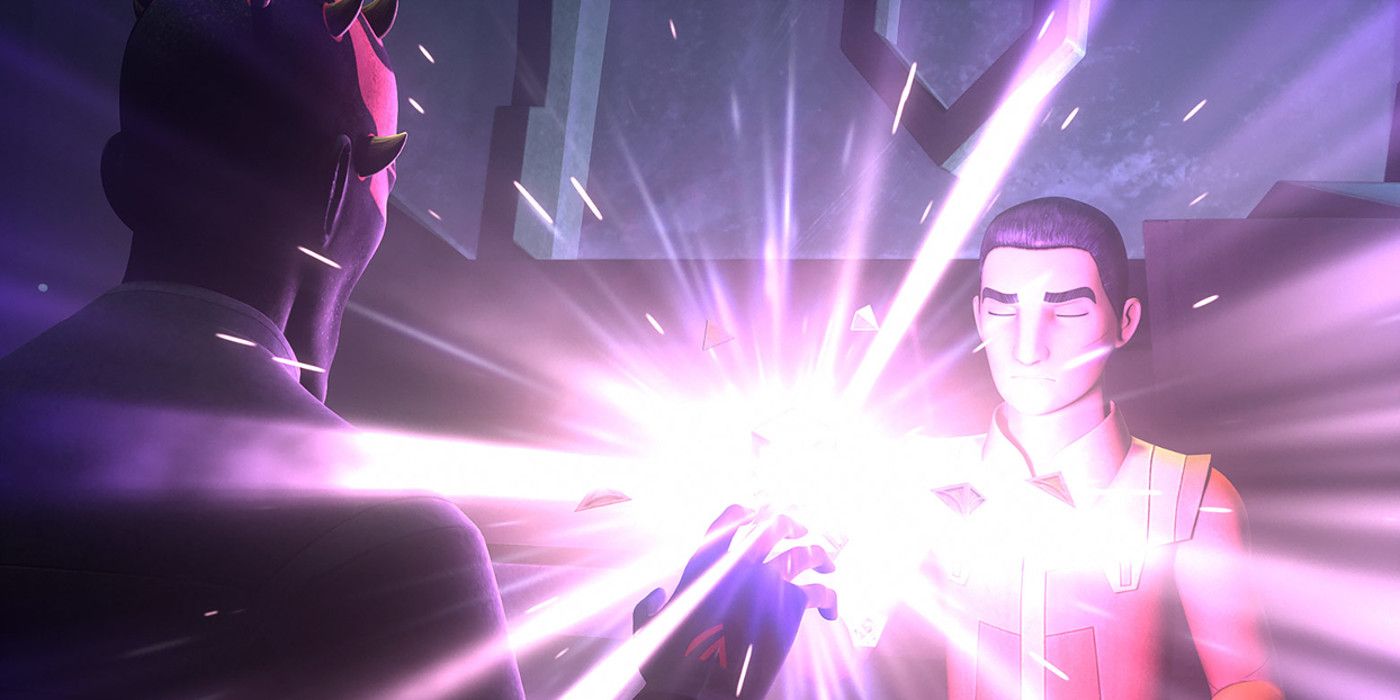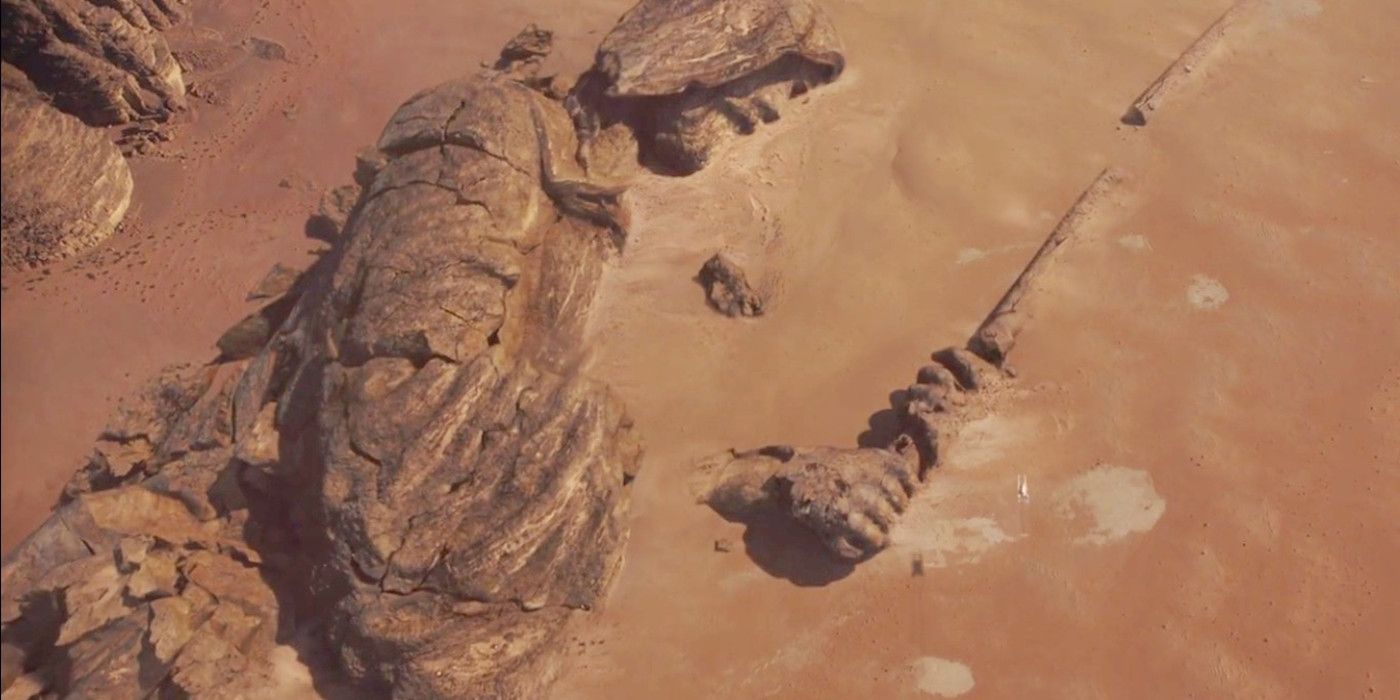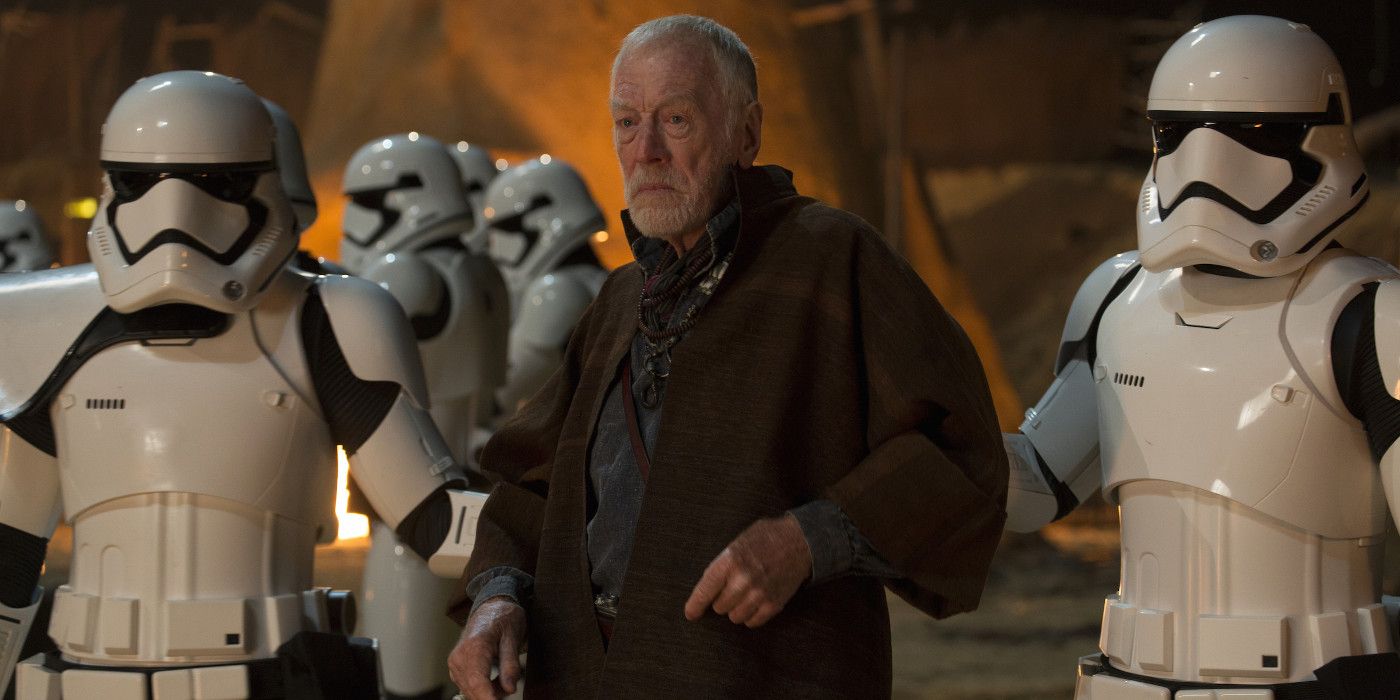The Force is a mysterious thing. With seven (soon to be eight) Star Wars movies, two animated series, and dozens of comics, novels, sourcebooks, and other media, there’s still a lot of confusion of what it is and how it works, and it's not likely that it will ever be spelled out in explicit terms. After all, the Force is far more fascinating as a theoretical, philosophical, and metaphysical question. But there still need to be a few ground rules to even have such a discussion, otherwise, Han will be yelling “that’s not how the Force works!” at you.
While some Star Wars content (especially on the animation side) has given a lot more information about the Force, many of the answers only create a hundred more questions. Tying all the loose threads together can be tedious work, so here are 15 Things That Will Help You Understand The Force.
15. The Basics
What is the Force? Well, according to Obi-Wan Kenobi, the Force is “an energy field created by all living things. It surrounds us and penetrates us; it binds the galaxy together,” Yoda says “Its energy surrounds us and binds us...You must feel the Force around you; here, between you, me, the tree, the rock, everywhere,” and Maz Kanata says “Close your eyes. Feel it. The light…it’s always been there. It will guide you.”
That all might sound fairly ambiguous, but it does establish a few characteristics: the Force is energy, it comes from life, it surrounds life, it permeates all things, and it has its own will. Over the eons, various beings and groups came to recognize the Force in their own ways. Some would worship it, some would its guidance, others would seek to wield it to exert their will, thus attempting to impose their will upon the Force itself.
14. The Living Force
The Force is comprised of two halves, the first of which is the living Force. When Obi-Wan talks about the Force being “created by all living things,” he’s talking about the living Force. All life in the physical universe comes together to form the living Force. Qui-Gon Jinn was a student of the living Force, and as Obi-Wan’s master - and continued mentor from beyond the grave during Kenobi’s time in exile - it makes sense that the old Jedi would use that terminology when describing the Force to a young Luke Skywalker for the first time.
Since the living Force is created by all living things, it’s the part of the Force that Force users like the Jedi manipulate to wield various powers like telekinesis. Since the living Force is a part of the physical realm, students of the living Force typically focus more on the immediate moment instead of getting caught up in the future or the past - the intangible.
13. The Cosmic Force
The cosmic Force is the other half of the equation, and it is fed by the living Force. When life (part of the Living Force) dies, it feeds the cosmic Force, which makes up the more spiritual side. If the Force has a will, it comes from the cosmic Force. The cosmic Force is what “speaks” to Force users, gives them visions, prophesies, intuition, and other similar abilities.
So, while living Force deals with all things in the realm of the living and can be wielded to manipulate things in the material world, the cosmic Force is far more ethereal. This side of the Force is on display when Anakin is tormented with dreams about the fate of his mother and Padme, Luke’s vision/duel with Vader and prophecy about Han and Leia on Cloud City, and in Rey’s “Forceback” when she touches Luke’s lightsaber. Darth Sidious arguably had the best grasp of this aspect of the Force. Sure, he was also powerful in the sense that he could conjure Force lightning, but he was also able to subdue almost the entire galaxy due to his clairvoyance and premonitions.
12. What Are Midi-chlorians?
In the nexus of the living Force and the cosmic Force are the midi-chlorians - microscopic life in all living cells that are able to communicate with the Force. Serving as receptors to connect individuals to the Force, the concentration of midi-chlorians in one’s cells determines their natural affinity for the Force and serve as a conduit through which intelligent beings can connect to Force. Force users that are able to quiet their mind can listen to the midi-chlorians, which in turn communicate the will of the Force.
Anyone can learn to use the Force, but those with higher midi-chlorian counts have a much stronger natural affinity, in the same way that certain people can be more naturally talented athletes or chess players. Training and practice is essential in both scenarios, but some people ultimately have more natural potential. So, while individuals with lower midi-chlorian counts may learn to use the force - and even become powerful Force wielders - their hard work may not produce the same aptitude as someone with a higher midi-chlorian count. That being said, one can spend their whole life in a remote corner of the galaxy and never even have the opportunity to learn the ways of the Force, despite having a high midi-chlorian count - so affinity is ultimately secondary to opportunity and effort.
11. Force Beings
The will of the Force is usually attributed to a more abstract “eternal consciousness,” but the Force does manifest itself in far more concrete ways from time to time. The most notable of these manifestations were the Force wielders of Mortis and the Force priestesses in The Clone Wars animated series.
The Force wielders were a family of Force beings that lived on Mortis, engaging in an eternal struggle for balance. The Son was an embodiment of the dark side, and sought to escape and enslave the galaxy; the daughter was the embodiment of the light side, and brought life to all areas of Mortis; and the Father was in between the two, attempting to maintain order. Not much else is known about these beings, but the daughter did sacrifice her life force to bring Ahsoka back from the dead, so it’s entirely possible we’ll learn more about them in season 3 of Rebels, or future Ahsoka storytelling.
If the Force wielders weren’t strange enough, there’s also the Force priestesses - 5 manifestations that embody the emotions of Serenity, Joy, Anger, Confusion, and Sadness. These priestesses are the beings that present themselves to Jedi Masters Yoda and Qui-Gon Jinn to teach them how they can also manifest their consciousness after death.
10. The Jedi Order
The Jedi are a particular sect of Force users that adhere closely to a particular creed- the “Jedi Code.” The code taught the Jedi to be selfless, humble, and to value the lives of others above their own:
There is no emotion, there is peace.
There is no ignorance, there is knowledge.
There is no passion, there is serenity.
There is no chaos, there is harmony.
There is no death, there is the Force.
Unfortunately, over time the Jedi lost touch with the intent of the code, with some abandoning emotion entirely - losing their compassion for others in an attempt to avoid attachment. The last of the Jedi had grown arrogant and developed a cozy relationship with the Galactic Republic. Their lack of compassion pushed Anakin Skywalker into the arms of the deceptive Sheev Palpatine, who had spent years maneuvering the Jedi into a position of weakness. He plays his final card, Order 66, which resulted in the death of almost every single Jedi, all but extinguishing the order.
9. The Sith
The Sith are the second of the two major factions of Force users. Originally spinning out of the Jedi Order, the Sith order began when a rogue Jedi began experimenting with the dark side of the force and was rejected and cast out by the Jedi. Many Jedi followed him, and together they formed what would eventually become the Sith Empire.
The two orders would eventually face each other in a massive war, ending with the perceived decimation of the Sith, but one Sith master survived - Darth Bane. Bane saw that the Sith’s greed and lust for power - the source of much of their strength - was a double-edged sword, eventually leading to infighting and the collapse of their order. In an effort to avoid making the same mistakes again, he introduces the Rule of Two - determining that there should only ever be two Sith - a master and an apprentice.
The Rule of Two preserved the Sith for many more generations, ensuring the power of the Dark Lords grew every time an apprentice would become strong enough to oust his master. This pattern repeated until Darth Sidious gained control of the Republic, making it the Galactic Empire, and making Darth Vader his new apprentice. It is Vader that fulfills his destiny as a Sith to kill his master, only this time it’s an act of sacrifice to save his son, the last Jedi. His sacrifice ends the line of Sith succession, putting an end to the Sith - as far as we know.
8. Nightsisters of Dathomir
The Nightsisters were a clan of Dathomirian witches that utilized the dark side of the Fore indirectly through dark magick. This allowed them to wield many of the powers of the dark side without fully succumbing to its corrupting effects. So, while the Nightsisters were decidedly on the dark side like the Sith, they weren’t as susceptible to the same infighting and betrayal since they didn’t fully give in to the dark side.
At the time of the clone wars, the Nightsisters were under the leadership of Mother Talzin. She had a relationship with Darth Tyrannus, Count Dooku, in which she would provide him with dark side assassins, notably Asajj Ventress and Savage Opress, but after she attempts to assassinate the Sith Lord, he has General Grievous invade Dathomir, wiping out almost all the Nightsisters. Mother Talzin survives the assault, but eventually loses her life anyway in a later confrontation with the cyborg Separatist general.
7. Other Force Factions
Aside from the Jedi, the Sith, and the Nightsisters, there are several more known groups of Force users. These include the Lasat, who approach the Force in a much more religious way. They worship the light side of the Force, which they call the “Ashla”, and trust in it for guidance and protection. By channeling the Ashla, some Lasat were able to have visions and prophecies, even predicting future events.
The Dagoyan Masters are another example of how different groups approached the Force. The Dagoyan Masters were a group of Force-sensitive Bardottans that condemned other Force users for directly wielding Force energy, considering it a sacrilege. Instead, the Dagoyans only communed with the Force passively, allowing it to reveal itself to them, but not pursuing or manipulating it directly. Because of this, the Dagoyans also rebuked the Jedi for seeking out younglings to train as Jedi, considering it child abduction and kidnapping.
6. The Unaffiliated
Not all Force users have to be card carrying members of a specific doctrine. Not all light side Force users are Jedi, and not all dark side Force users are Sith. Those labels are merely ways of defining an organized dogma with which many Force users choose to align themselves. There are many examples in modern Star Wars canon of people that understand and can use the Force but don’t subscribe to any larger organization.
The most popular of these unaffiliated is probably Ahsoka Tano. While Ahsoka was originally a Jedi padawan under Anakin Skywalker, her disillusionment with the Jedi sees her leave the group. Even though she surrendered her padawan title and gives up her lightsabers, she still possesses the knowledge she had learned, and even builds herself new lightsabers. Her rejection of the Jedi isn’t a rejection of their ways. She still practices many Jedi teachings, but she chooses not to align with the group because of the arrogance and bureaucracy she believes has infected the council.
Besides Ahsoka, Maul, Bariss Offee, and Maz Kanata all possess knowledge and skills in the Force, but don’t belong to a specific faction. Maul and Barriss have left theirs, like Ahsoka, but it’s not clear if Maz ever had any affiliation with any other organized Force users in her 1,000 years of life.
5. Force Spirits
Most Force users believe that when living beings die, they pass into the cosmic force, becoming a part of an eternal consciousness, but a few Jedi have learned how to pass into the cosmic Force without losing their individuality. Qui-Gon Jinn is the first known to have accomplished this. As an adept student of the living Force, he was taught by the Force Priestesses how to elevate his mind and deny his sense of self to become one with the Force upon death. He was not able to master this technique before dying, so he could only communicate with the living through places that were naturally strong in the Force, or if they were able to likewise elevate their consciousness.
Toward the end of the clone wars, he was able to make contact with Yoda, who also learned this technique from the Priestesses and likewise passed this knowledge on to Obi-Wan Kenobi. These Jedi were able to spend nearly two decades perfecting this practice, so that when they died their entire beings became one with the Force, and they disappeared from the physical realm.
One of the biggest desires of the Sith is to achieve immortality, but this technique is not something the Sith can accomplish since it requires a Force users to abandon their sense of self and the practices of the Sith are inherently selfish. It’s assumed that Anakin Skywalker is able to achieve this in his final moments due to the nature of his selfless sacrifice, but the reason why he’s successful when it took far longer for Yoda and Obi-Wan has yet to be explored.
4. Holocrons
Over the generations, as Jedi and Sith gathered more and more knowledge about the Force and the universe at large, they began to store that knowledge in holocrons. The information in these holocrons was often accessed through an interactive interface, often taking the persona of a Jedi or Sith master.
The data stored on the holocrons ranged from the locations of known Force-sensitive younglings to lightsaber techniques or other important knowledge. The holocrons themselves had some sort of a connection to the Force, and access was commonly restricted to a Force wielder with the same alignment as the one who made it.
When a Jedi holocron and a Sith holocron were brought together, they would grant the owner near universal knowledge. Whether this was by some pre-ordained intent by the Jedi and Sith or some larger occurrence due to the will of the Force is unknown, but the event was, needless to say, extraordinarily rare. Ezra Bridger and Maul are the only known individuals to ever bring a Jedi and Sith holocron together, but Darth Sidious recovered most of the Jedi holocrons after the Jedi purge, so there’s a high likelihood that much of his clairvoyance came from utilizing combined holocrons.
3. Locations
At the center of the Star Wars galaxy, there’s a Force plane where the Force priestesses live and from which all the midi-chlorians are produced. Life originates from this planet and spreads outward to the rest of the galaxy. While the Force exists everywhere, some places have been found to have a much stronger Force presence - such as Mortis. While little is known of Mortis, it’s highly possible that it’s entirely manifested by the Force - like it’s inhabitants. Dagobah is also said to have a strong presence and, like Mortis, could possibly even be the site of a “Force nexus,” experiencing a minor time dilation effect - possibly explaining an oft-cited difference in time between Luke’s Jedi training with Yoda and the time it took the Falcon to travel to Cloud City.
There are also some planets that are considered sacred or holy places, possibly also because of a strong Force presence, but that isn’t certain for all of them. Ilum, where the Jedi get the kyber crystals for their lightsabers; Moraband, the former Sith homeworld; Malachor, the location of a Sith superweapon and the site of a massive battle between the Jedi and Sith; Coruscant, the location of the main Jedi temple (and a secret Sith shrine below the temple); and Ach-To, the site of the very first Jedi temple are all important locations for Force users.
Rogue One will also feature Jedha, another planet important to the Jedi. Not much is known about Jedha, but it was an important place for the Jedi and many different beings visit the planet on pilgrimages. One shot in the trailer even shows a massive downed Jedi statue, so it’ll be exciting to hopefully learn more about Jedha in December.
2. The Church of the Force
Not all those who follow the Force are Force wielders. Some people believe in the Force and the traditions that follow it but lack the Force sensitivity or training to wield the powers. Many of those people would still follow the dogma of their chosen faith, such as the Church of the Force. Formed in secrecy during the reign of the Empire, the Church of the Force didn’t believe Imperial propaganda painting the Jedi as traitors and worked to preserve any Jedi history and artifacts they could recover.
It’s Lor San Tekka, a member of the Church of the Force, that provides Poe Dameron with the piece of the Star Map needed to find Luke Skywalker at the start of The Force Awakens. It was also the Church of the Force that helped Luke begin to restore the Jedi Order after the events of Return of the Jedi, and - given the nature of the planet Jedha- it’s possible we’ll get to see more of them in Rogue One.
1. The Balance of the Force
The prophecy of the Chosen One says that he will bring balance to the Force. But what does this mean? There’s been a lot of debate over the years as to who is actually Chosen One, and what does he do to brings balance to the Force? If it’s Anakin, does he bring balance to the Force by killing all the Jedi, and eventually the Sith, bringing the slate back to zero? Is it Luke, and he restores balance by bringing back the Jedi? Or was it neither of them, and Rey is actually the fabled Chosen One?
While there’s no concrete answer in Star Wars, Lor San Tekka does specify that (at least in his opinion) “without the Jedi, there can be no balance to the Force.” This would indicate that “balance” isn’t referring to some sort of cosmic scales that are tipped based on how many Force users are in the light vs the dark, but that the Jedi have some sort of inherent balancing effect. Considering the Sith and other darksiders strive to bend the Force to their will, whereas the Jedi strive to deny their own desires and instead fulfill the will of the Force, it would make sense that the Force is more in balance when it’s not being twisted.
Either way, it looks like the concept of balancing the Force may be another major theme in Episode VIII and Episode IX, so don’t be surprised to see additional development on that front moving forward.
---
What do you think? Does this shed any light on the mysteries of the Force? Do you have any theories about the Force that haven't been addressed in any Star Wars media? Let us hear about it in the comments!

